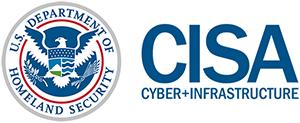Covid-19 Sparks Upward Trend in Cybercrime

Europol’s 2020 cybercrime report updates on the latest trends and the current impact of cybercrime within the EU and beyond.
So much has changed since Europol published last year’s Internet Organised Crime Threat Assessment (IOCTA). The global COVID-19 pandemic that hit every corner of the world forced us to reimagine our societies and reinvent the way we work and live. During the lockdown, we turned to the internet for a sense of normality: shopping, working and learning online at a scale never seen before. It is in this new normal that Europol publishes its 7th annual IOCTA. The IOCTA seeks to map the cybercrime threat landscape and understand how law enforcement responds to it. Although the COVID-19 crisis showed us how criminals actively take advantage of society at its most vulnerable, this opportunistic behaviour of criminals should not overshadow the overall threat landscape. In many cases, COVID-19 has enhanced existing problems.
CROSS-CUTTING CRIME
Social engineering and phishing remain an effective threat to enable other types of cybercrime. Criminals use innovative methods to increase the volume and sophistication of their attacks, and inexperienced cybercriminals can carry out phishing campaigns more easily through crime as-a-service. Criminals quickly exploited the pandemic to attack vulnerable people; phishing, online scams and the spread of fake news became an ideal strategy for cybercriminals seeking to sell items they claim will prevent or cure COVID-19.
Encryption continues to be a clear feature of an increasing number of services and tools. One of the principal challenges for law enforcement is how to access and gather relevant data for criminal investigations. The value of being able to access data of criminal communication on an encrypted network is perhaps the most effective illustration of how encrypted data can provide law enforcement with crucial leads beyond the area of cybercrime.
MALWARE REIGNS SUPREME
Ransomware attacks have become more sophisticated, targeting specific organisations in the public and private sector through victim reconnaissance. While the COVID-19 pandemic has triggered an increase in cybercrime, ransomware attacks were targeting the healthcare industry long before the crisis. Moreover, criminals have included another layer to their ransomware attacks by threatening to auction off the comprised data, increasing the pressure on the victims to pay the ransom. Advanced forms of malware are a top threat in the EU: criminals have transformed some traditional banking Trojans into modular malware to cover more PC digital fingerprints, which are later sold for different needs.
CHILD SEXUAL ABUSE MATERIAL CONTINUES TO INCREASE
The main threats related to online child abuse exploitation have remained stable in recent years, however detection of online child sexual abuse material saw a sharp spike at the peak of the COVID-19 crisis. Offenders keep using a number of ways to hide this horrifying crime, such as P2P networks, social networking platforms and using encrypted communications applications. Dark web communities and forums are meeting places where participation is structured with affiliation rules to promote individuals based on their contribution to the community, which they do by recording and posting their abuse of children, encouraging others to do the same. Livestream of child abuse continues to increase, becoming even more popular than usual during the COVID-19 crisis when travel restrictions prevented offenders from physically abusing children. In some cases, video chat applications in payment systems are used which becomes one of the key challenges for law enforcement as this material is not recorded.
PAYMENT FRAUD: SIM SWAPPING A NEW TREND
SIM swapping, which allows perpetrators to take over accounts, is one of the new trends in this year’s IOCTA. As a type of account takeover, SIM swapping provides criminals access to sensitive user accounts. Criminals fraudulently swap or port victims’ SIMs to one in the criminals’ possession in order to intercept the one-time password step of the authentication process.
CRIMINAL ABUSE OF THE DARK WEB
In 2019 and early 2020 there was a high level of volatility on the dark web. The lifecycle of dark web market places has shortened and there is no clear dominant market that has risen over the past year. Tor remains the preferred infrastructure, however criminals have started to use other privacy-focused, decentralised marketplace platforms to sell their illegal goods. Although this is not a new phenomenon, these sorts of platforms have started to increase over the last year. OpenBazaar is noteworthy, as certain threats have emerged on the platform over the past year such as COVID-19-related items during the pandemic.




